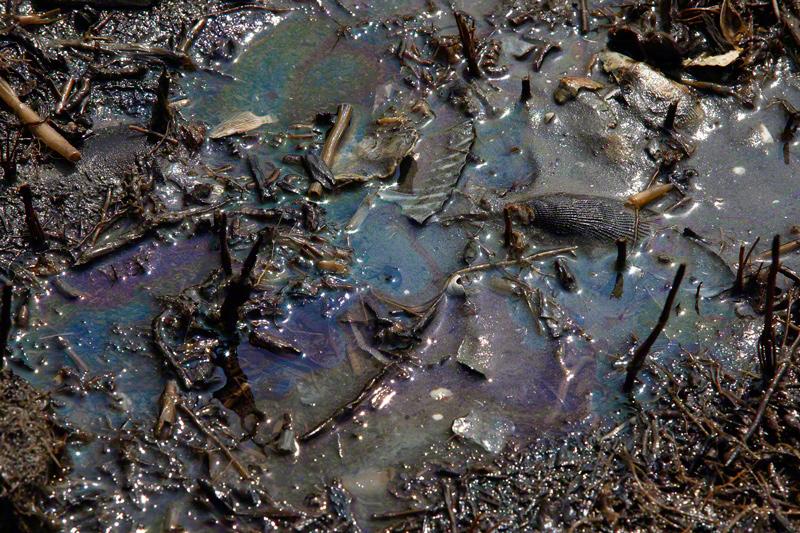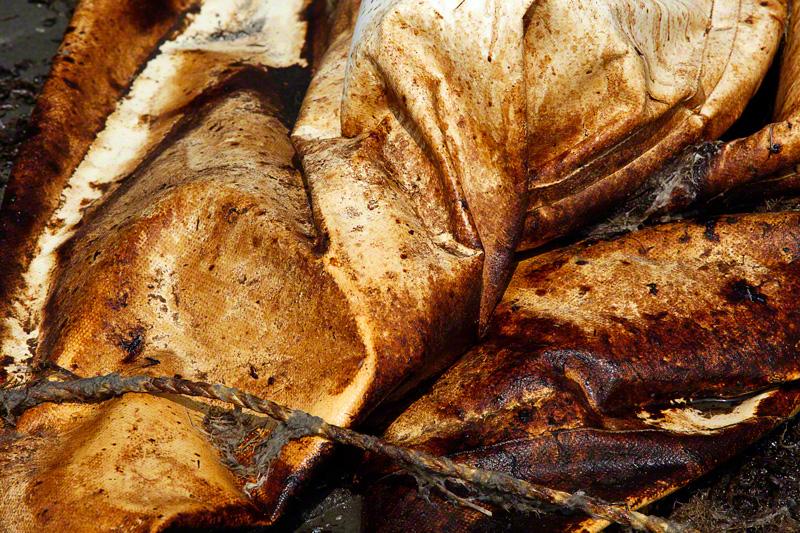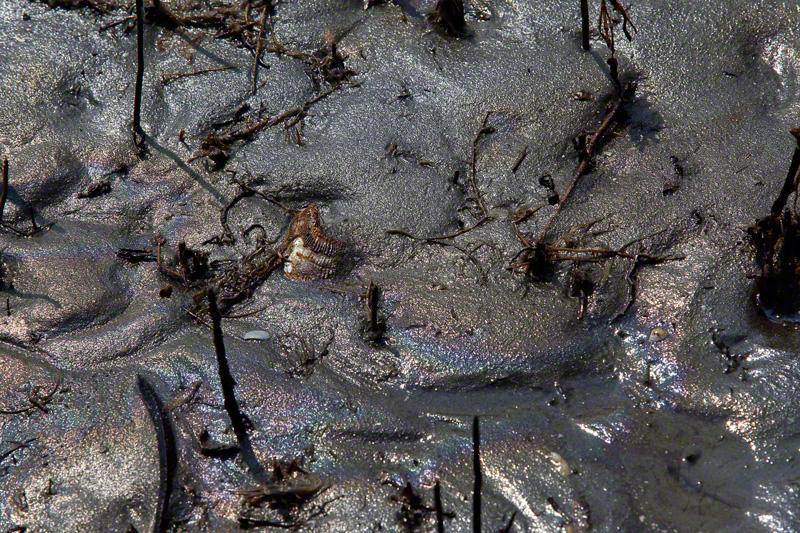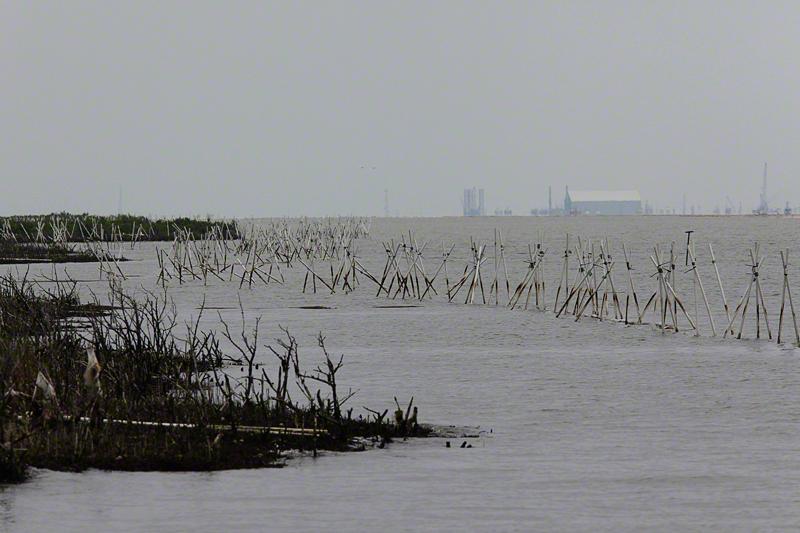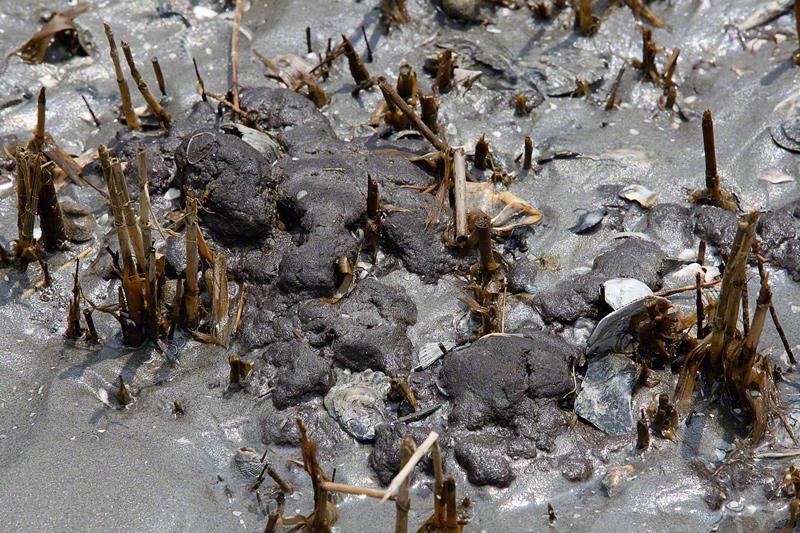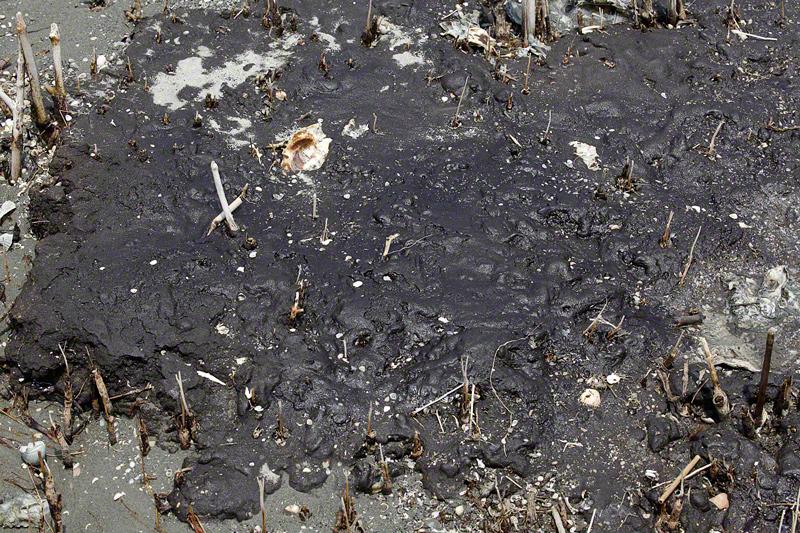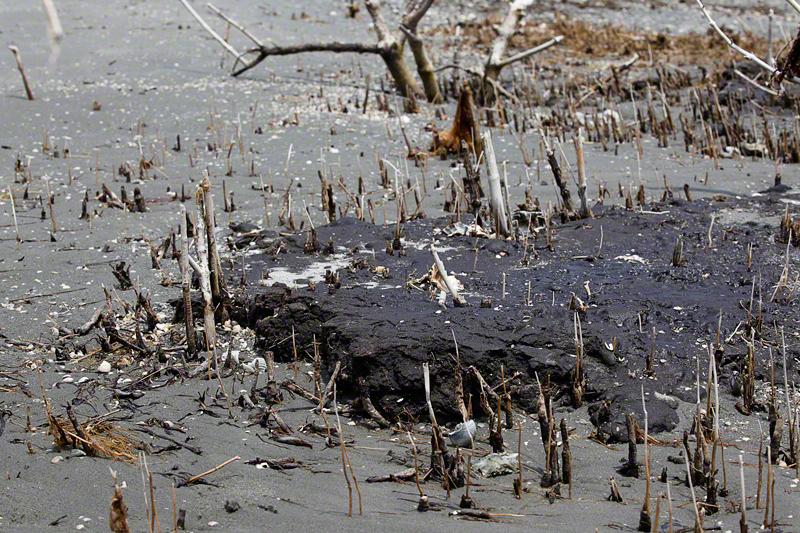Photo by Erika Blumenfeld 2010
Photo by Erika Blumenfeld 2010
Photo by Erika Blumenfeld 2010
I watch a bird looking for food among the blackened stubs of marsh grass. I think of how the oil brings death to everything it touches, sooner or later.
We get back in Craig's boat and move on toward another island, but skirt the coast of this one whilst en route. Around the south side we find the entire coast oiled. Contaminated sorbent boom litters the coast above tide line.
"So when are they gonna come pick this up?" Craig asks angrily to no one. "In 10 years? So did they just not care about this island?"
Photo by Erika Blumenfeld 2010
There is another forest of PVC pipe sticking out of the water.
I look down at Craig's GPS map on the boat. We float in the bay, but the map shows us on land. "This is a post-Katrina map," Craig points out. "That's how fast we're losing the marsh."
Early upon our arrival in Louisiana, I was made aware of how every 30 minutes, the state loses a football-field-sized chunk of land to the Gulf of Mexico. The first of two primary causes is the hemming in of the Mississippi River, which prevents it from dumping sediment to replenish the land. The second is the oil and gas industry, which has carved out channels and canals, causing between 30-60 percent of this erosion. One third of the island on Craig's map is now gone. There are other islands on his map that no longer exist.
As we continue on, Craig says that the water seems odd, and "not as crisp" as it usually is. He says, "It seems like it has cellophane over it." Several times throughout the day Craig makes this comment. To me, given that the water has a slight chop, it is hard to see his point - but that will soon change.
We arrive at Timbalier Isle, a barrier island of Timbalier Bay. After we offload, Jonathan calls me over. He'd filled his rubber boots with water while wading ashore. He pulls off one of his boots and dumps the contents on the sand. The water is full of silvery sheen as it splashes onto the sand. We both shake our heads.
We begin walking and find tar balls everywhere. In some places, there are literally huge mats of fresh tar.
Photo by Erika Blumenfeld 2010
Photo by Erika Blumenfeld 2010
Photo by Erika Blumenfeld 2010
(Note: You can view every article as one long page if you sign up as an Advocate Member, or higher).


